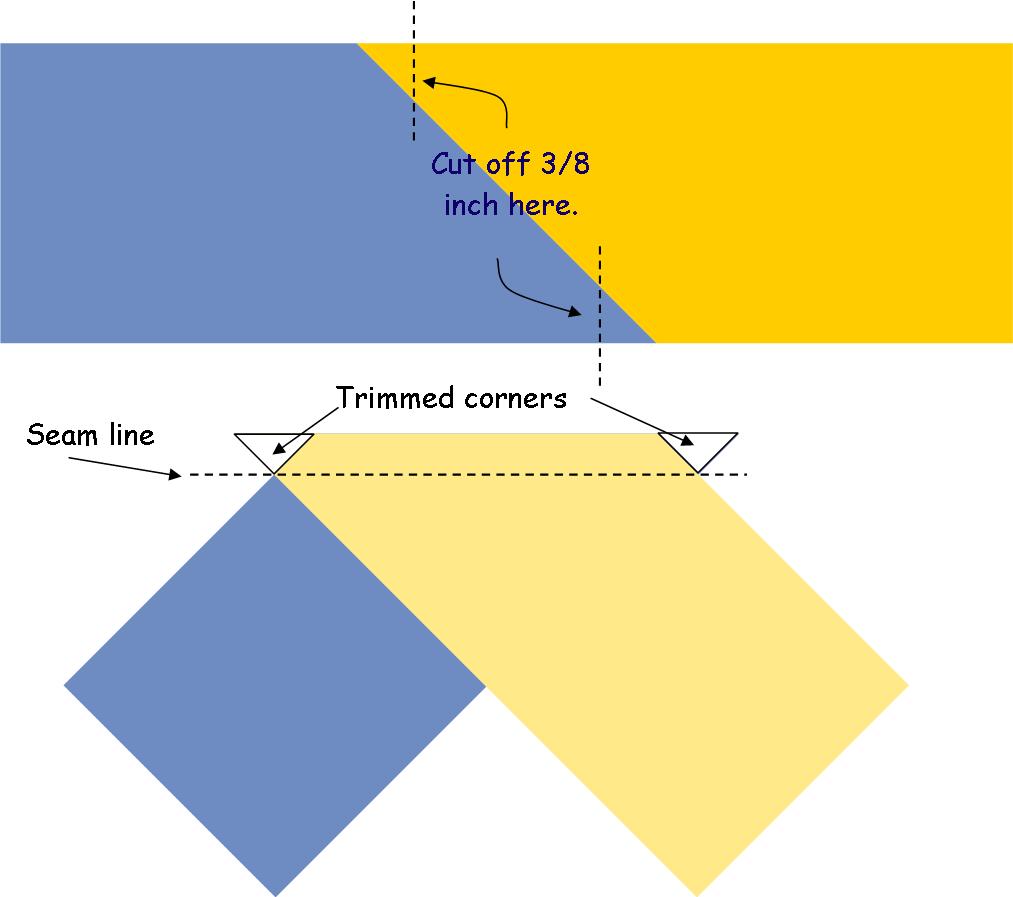Well, not quite. Before you can sew them together, you have to line them up, and exactly how you line them up before sewing can make a big difference in how well they are lined up after sewing. Here are my top 3 tips to help:
1. Align the Whole Patch, Not Just the Edges
Until they are actually sewn together, locked in place by a line of stitching, two pieces of fabric can, and very often will, move. Pinning can help, but seriously, we all know that nobody wants to pin every seam.
My preferred solution is to use the friction of fabric against fabric to help prevent slippage. So put those two patches down on a flat surface, line them up nice and square, and smooth them together. Less slipping is guaranteed.
2. Cut Corners
When you're sewing half-square triangles (HSTs) together into squares, there's no problem: the whole patch lines up. But if you're sewing a square side of just one triangle to a rectangular piece, there's that ear sticking out. Not such a big deal, but it gets more complicated. Think of the diagonal piecing of a long border strip.
We all know that HSTs need to be cut 3/8-inch larger than the square they will form after sewing. (And if you didn't know that, now you do.) So trimming off that 3/8-inch triangle tip will square up the seam. The trick is knowing which direction to cut. A picture is worth a thousand words, so here are some diagrams to make it all perfectly clear.
3. Match the Fabric Grain
Chances are, this is a case of mis-matched fabric grain. As I described in Part 1: Cutting, the cross grain of the fabric will have a bit of stretch, while the straight grain will not. Often, this difference in fabric stretch is enough to make two fabric edges distort at different rates as they pass under the presser foot. Two edges that were exactly the same length before sewing no longer match after sewing. The longer the seam, the more pronounced the distortion will be.
You can avoid this effect when sewing strips together, by making sure to match edge grain. That is, sew two straight-grain edges together, or two cross-grain edges. In cases where matching grain is not possible, there are some simple ways to minimize grain distortion while sewing.
Coming Up Next ...
Subscribe to my email list below to notified!




 RSS Feed
RSS Feed